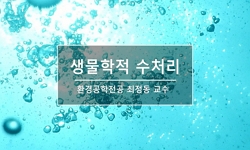The D?sseldorf Waterworks has been using bank filtration since 1870 as a means of water catchment. A great deal of experience and knowledge has been acquired over a period of more than 125 years. For the first 80 years, bank filtration alone, without ...
http://chineseinput.net/에서 pinyin(병음)방식으로 중국어를 변환할 수 있습니다.
변환된 중국어를 복사하여 사용하시면 됩니다.
- 中文 을 입력하시려면 zhongwen을 입력하시고 space를누르시면됩니다.
- 北京 을 입력하시려면 beijing을 입력하시고 space를 누르시면 됩니다.
Experience with Bank Filtration for the Public Water Supply in Dusseldorf, Germany = 강둑여과로 상수공급을 하고 있는 독일 듀셀도르프 경험 소개
한글로보기https://www.riss.kr/link?id=A19552137
-
저자
Schubert, Jurgen (Stadtwerke Dusseldorf AG)
- 발행기관
- 학술지명
- 권호사항
-
발행연도
1997
-
작성언어
English
- 주제어
-
KDC
539.9
-
자료형태
학술저널
-
수록면
207-244(38쪽)
- 제공처
- 소장기관
-
0
상세조회 -
0
다운로드
부가정보
다국어 초록 (Multilingual Abstract)
After World WarⅡ, the quality of the Rhine water began to deteriorate. A few years later, the affects of this also became evident in the raw water in the wells near the river, making it necessary to treat the water for drinking purposes. Based on intensive studies, the ”D?sseldorf Treatment Process“, in which ozone and GAC are employed, was developed, and implemented for the first time at the D?sseldorf ”Am Staad“Waterworks. The first thermal reactivation plant of its kind, with a two-stage fluidized-bed reactor, was installed near the D?sseldorf ”Holthausen“Waterworks to recycle the used activated carbon.
The positive trend in the quality of the water from the Rhine and its tributaries since 1970, reflects the success of national and international pollution control measures in the catchment area. The international Rhine Action Program, adopted a year after the Sandoz accident in 1986, gave effective impetus to the further improvement of the Rhine's ecosystem.
Flow and transport phenomena occurring between the river and the wells the subject of a ”bank filtration“ research project which was successfully concluded a few years ago. One of the results of this project is a three-dimensional, dynamic simulation model, which describes the effect of shock loads resulting from accidental pollution of the river on the raw water in the wells. Another result is a tailor-made monitoring system, which has proven invaluable in determining and reporting any pollution of the Rhine due to accidents.
The paper will essentially focus on water catchment by means of bank filtration embedded in the dynamic environment of a large river, including its scientific and technical background.
The D?sseldorf Waterworks has been using bank filtration since 1870 as a means of water catchment. A great deal of experience and knowledge has been acquired over a period of more than 125 years. For the first 80 years, bank filtration alone, without additional treatment, sufficed in order to obtain safe potable water.
After World WarⅡ, the quality of the Rhine water began to deteriorate. A few years later, the affects of this also became evident in the raw water in the wells near the river, making it necessary to treat the water for drinking purposes. Based on intensive studies, the ”D?sseldorf Treatment Process“, in which ozone and GAC are employed, was developed, and implemented for the first time at the D?sseldorf ”Am Staad“Waterworks. The first thermal reactivation plant of its kind, with a two-stage fluidized-bed reactor, was installed near the D?sseldorf ”Holthausen“Waterworks to recycle the used activated carbon.
The positive trend in the quality of the water from the Rhine and its tributaries since 1970, reflects the success of national and international pollution control measures in the catchment area. The international Rhine Action Program, adopted a year after the Sandoz accident in 1986, gave effective impetus to the further improvement of the Rhine's ecosystem.
Flow and transport phenomena occurring between the river and the wells the subject of a ”bank filtration“ research project which was successfully concluded a few years ago. One of the results of this project is a three-dimensional, dynamic simulation model, which describes the effect of shock loads resulting from accidental pollution of the river on the raw water in the wells. Another result is a tailor-made monitoring system, which has proven invaluable in determining and reporting any pollution of the Rhine due to accidents.
The paper will essentially focus on water catchment by means of bank filtration embedded in the dynamic environment of a large river, including its scientific and technical background.
목차 (Table of Contents)
- 1Bank Filtration as a Means of Water Catchment
- 2Characteristics of the Rhine Catchment Area
- 3Historical Development of the Düsseldorf Public Water Supply
- <폰트 posture="italic">Construction of the First Bank-filtration Waterworks in Flehe
- <폰트 posture="italic">Supplementary Catchment Sites to Cover the Increasing Demand for Water
- 1Bank Filtration as a Means of Water Catchment
- 2Characteristics of the Rhine Catchment Area
- 3Historical Development of the Düsseldorf Public Water Supply
- <폰트 posture="italic">Construction of the First Bank-filtration Waterworks in Flehe
- <폰트 posture="italic">Supplementary Catchment Sites to Cover the Increasing Demand for Water
- 3.3The <아래첨자>"Economic Miracle“ Needs Energy and Water
- 4Deterioration of the Quality of the Rhine Water
- 5Associations and Commissions in the Rhine Catchment Area
- 5.1Associations of the Rhine Waterworks
- 5.2International Commissions in the Rhine Catchment Area
- 6The "Düsseldorf Process"
- 6.1Bank Filtration
- 6.2Water Treatment
- 7Reactivation of Granular Activated Carbon - GAC
- 8The consequences of Remedial Measures on the Rhine
- 8.1The Sandoz Accident
- 8.2The Rhine Action Program
- 9The “Bank Filtration” Research Project
- 10Tailor-made System for Monitoring Accidents on the Rhine
- 12Monitoring of Passage through the Soil
동일학술지(권/호) 다른 논문
-
WATER QUALITY MANAGEMENT OF THE RHINE RIVER FROM THE VIEW OF THE WATERWORKS
- 嶺南大學校 環境問題硏究所
- Lindner, Klaus
- 1997
-
RESIDUAL NONAQUEOUS PHASE LIQUID DISSOLUTION IN MICROMODELS
- 嶺南大學校 環境問題硏究所
- M. Yavuz Corapcioglu
- 1997
-
Anaerobic Reactor Technology for Wastewater Treatment
- 嶺南大學校 環境問題硏究所
- Jung, Jinyoung
- 1997
-
TRICKLE-BED BIOFILTERS FOR THE TREATMENT OF GAS PHASE POLLUTANTS
- 嶺南大學校 環境問題硏究所
- Makram T. Suidan
- 1997




 RISS
RISS







